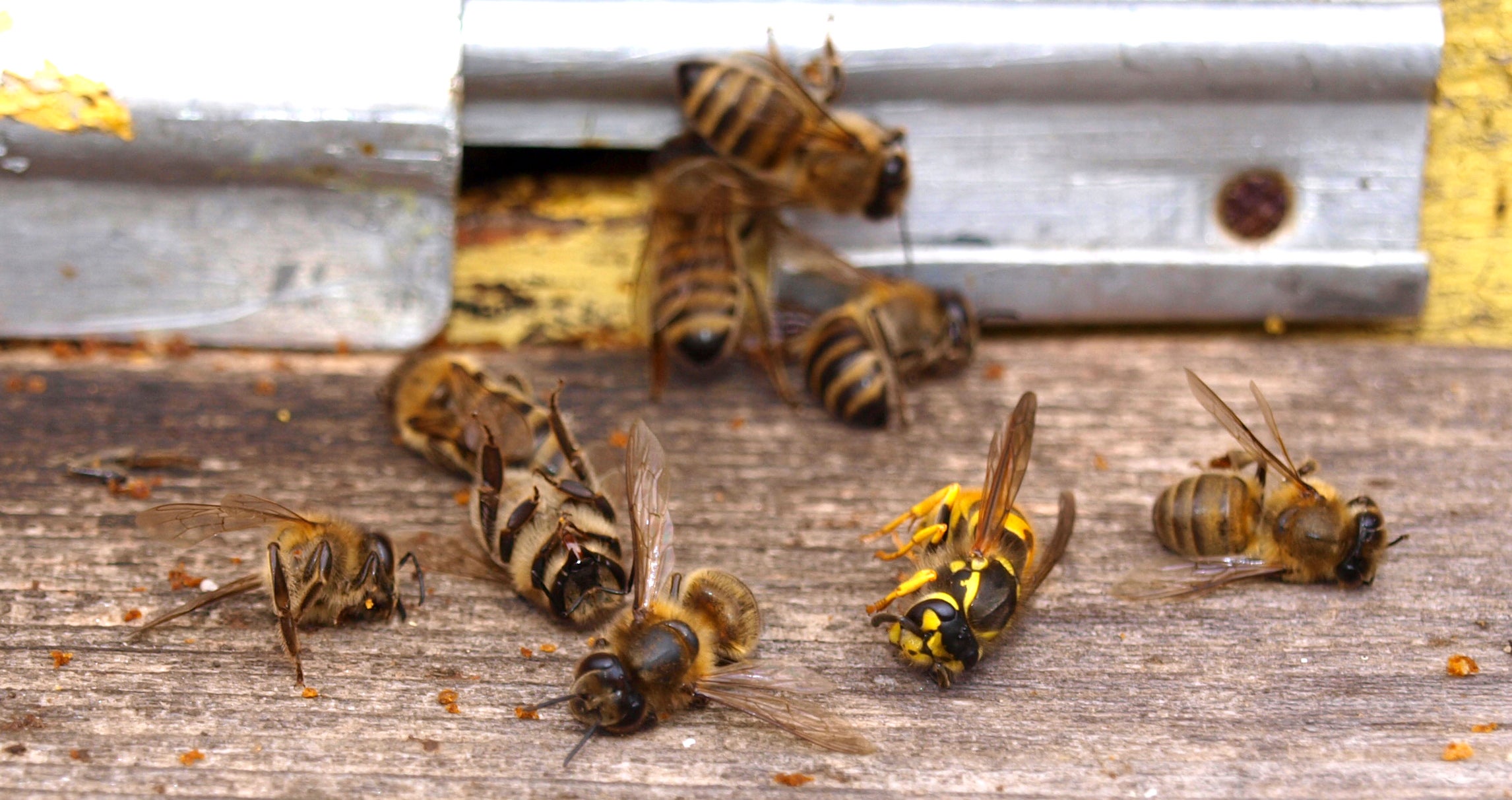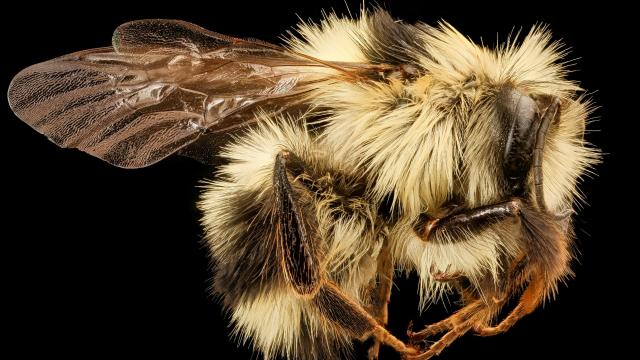If you’re close enough to a bumblebee to see the order of its stripes, you’re probably too close to it. But lucky for you, a team of geneticists recently did a more highfalutin version of that task, analysing several species of bee to suss out what causes different species of the insect to get different patterns on their abdomens.
Previously, a specific developmental gene (Hox gene Abd-B) had been identified as somehow responsible for colour variation in the animals’ rear ends. But beyond how that gene actually changed the colours, the bees were a black box. With the recent research, the team was able to pin down more of the exact genes involved in the process of pigmentation in the bees. Their research was published earlier this year in Genome Biology and Evolution.
“Understanding these genes, we now have the potential to look at so many different bee species and how they’ve diversified,” said Heather Hines, an entomologist and geneticist at Penn State University and a co-author of the recent paper, in a university press release. “So, it’s not a case that once we are finished here that we’re done. Given the diversity in these bees, there’s just so much more that can be done with the discovery. This is just really the first step.”
Many insects sport black-and-yellow backsides; some of them even develop the pattern to convince other species that they’re a more dangerous animal with the same markings, like a wasp. Sometimes two well-armed animals develop similar markings. Whatever the case for the copy-catting, these pretenders of nature are called mimics.
There’s some mimicry that’s local to the bumblebee community, and that’s what the recent team was looking at: Who’s copying who among the 260-odd species that display about 400 different patterns on bees’ abdomens — literally, their rear ends. (There are many thousands of bee species, but not as many bumblebee species.) They studied one species in particular: Bombus melanopygus, the black-tailed or orange-rumped bumblebee.

To conduct the genetic analysis in a bee not commonly used in research, the team had to lean on the more well-known and utilised genomes of other animal species. Luckily, though, they weren’t scanning the entire length of genetic codes manually.
“The use of high-performance computation power has made this type of research more manageable and reproducible,” said lead author Sarthok Rahman, a biologist now at the University of Alabama, in the same release. “Because it’s a non-model organism, we also have to use other genomic sources from Drosophila and mice, for example, to search the genes and assign the identity.”
The team found that farther along the genetic code from previously identified Hox gene (a Hox gene being a type of developmental gene that regulates structures on animals’ bodies), a bunch of genes are responsible for different ratios of eumelanin and pheomelanin in the bees, the former which governs black pigmentation and the latter which handles red colours.
“This really adds to non-model, evolutionary genetic research, which is a growing field and the field is also expanding to be more comparative,” said Hines. “As we move forward, researchers will be looking at how genes and gene pathways have evolved across a broader diversity of species.”
We’re not done with the bees. Hardly. They offer new insights into the coloration of the insect world, but the genetic code (even in bees) is not the most reader-friendly document. Let’s just hope we can understand the animals’ coloration faster than we kill them off.
More: Yellow Dog Coats Came From an Ancient Canid That Split From Wolves Millions of Years Ago
